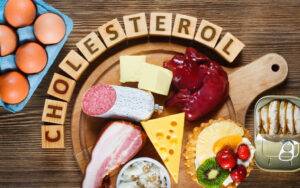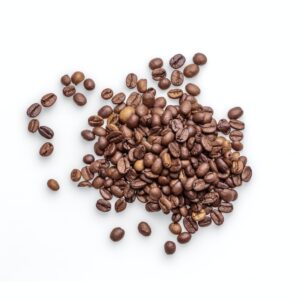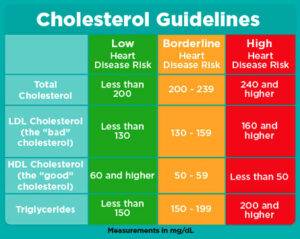Role of Dietary Cholesterol and Cholesterol Ranges
|
The Cholesterol Paradox Blog |
 Until now, we have discussed cholesterol, its relation with the cardiovascular system, causes, risk factors and myths, and their facts. You may find it strange that the amount of cholesterol in your diet and blood are two different things. The body tightly regulates the cholesterol level in the blood by controlling its production of cholesterol. When your dietary cholesterol intake goes down, your body makes more; when intake increases, your body makes less amount of cholesterol. Because of this, dietary cholesterol has very little impact on blood cholesterol levels in most people (1).
Until now, we have discussed cholesterol, its relation with the cardiovascular system, causes, risk factors and myths, and their facts. You may find it strange that the amount of cholesterol in your diet and blood are two different things. The body tightly regulates the cholesterol level in the blood by controlling its production of cholesterol. When your dietary cholesterol intake goes down, your body makes more; when intake increases, your body makes less amount of cholesterol. Because of this, dietary cholesterol has very little impact on blood cholesterol levels in most people (1).
Some specific foods are known to raise blood cholesterol levels. We will discuss their detail in the text below.
Effect of certain foods on your blood cholesterol level
Coffee
 Studies have shown that there is a chance that drinking coffee could increase a person’s blood cholesterol levels, though the brewing method may play a role. According to a more recent 2016 study, coffee drinking is associated with higher cholesterol levels, although its effects differ depending on the variety of coffee and the gender of the individual.
Studies have shown that there is a chance that drinking coffee could increase a person’s blood cholesterol levels, though the brewing method may play a role. According to a more recent 2016 study, coffee drinking is associated with higher cholesterol levels, although its effects differ depending on the variety of coffee and the gender of the individual.
Instant coffee is less likely to impact cholesterol levels than unfiltered and French press coffee. A prior study from 1997 found that the oils found naturally in coffee beans—rather than the amount of caffeine in coffee—may impact cholesterol levels.
Figure 1 Coffee Beans
Cafestol and kahweol are two natural oils, also referred to as diterpenes, and are found in coffee. Whereas the amount of diterpenes in coffee varies depending on the brewing process, the Institute for Scientific Information on Coffee (ISIC) believes that these oils can increase total and low-density lipoprotein (LDL) cholesterol levels.
For instance, the majority of the diterpenes stay in the coffee filter when coffee is made using paper filters. Unfiltered coffee, however, allows more diterpenes to enter the coffee. One or two cups of unfiltered coffee daily are acceptable, but experts advise against drinking more than four (2).
Sugar
Sugar substitutes provide calories but no nutrition. Sugars that are added are distinct from those that are naturally present in foods like fruits and milk. The term “added sugars” refers to sweets you add to food, such as white sugar, brown sugar, honey, and artificial sweeteners. The additional calories from 22 tablespoons of added sugar daily can reach 350.
Along with impacting your weight and increasing your risk for diabetes, these extra empty calories also affect your cholesterol levels. Additionally, sugary foods affect the production of cholesterol by your liver. When you consume too much sugar, your liver produces more LDL and less HDL.
A diet high in sugar also results in more triglycerides being produced, a blood fat type that affects your cholesterol levels. It develops when you consume more calories than your body requires to function. When your body requires additional energy between meals, triglycerides from your fat cells are released. Additionally, sugar hinders your body’s capacity to break down and eliminate triglycerides by blocking enzymes.
It’s critical to remember that your body requires cholesterol to function properly. Your body needs a crucial component to create new cells (3).
Butter
Butter contains saturated as well as trans fats. Both may increase the low-density lipoprotein (LDL) cholesterol or bad cholesterol in the blood. One tablespoon of unsalted butter is known to have 31 mg of cholesterol and 7.2 g of saturated fat. The American Heart Association (AHA) recommend that those who aim to lower their LDL cholesterol should get no more than 5-6 percent of their total calorie intake from saturated fat. On a 2000-calorie diet, this is equal to 11-13 g of saturated fat per day. Hence, two tablespoons of butter provide more saturated fat than most people should consume daily.
Evidence suggests that people should maintain a favorable ratio between LDL and HDL (high-density lipoprotein) levels (4).
Normal cholesterol ranges
 Your cholesterol numbers show how much cholesterol is circulating in your blood. Good cholesterol (HDL cholesterol) is one number you would want to be high. Bad cholesterol (LDL cholesterol) should be low. Your cholesterol numbers are important because they help you know your risk for heart disease. Cholesterol helps your body perform many important functions. But too much cholesterol is bad for your health. It can accumulate in your arteries and damage their integrity, leading to atherosclerotic plaque formation.
Your cholesterol numbers show how much cholesterol is circulating in your blood. Good cholesterol (HDL cholesterol) is one number you would want to be high. Bad cholesterol (LDL cholesterol) should be low. Your cholesterol numbers are important because they help you know your risk for heart disease. Cholesterol helps your body perform many important functions. But too much cholesterol is bad for your health. It can accumulate in your arteries and damage their integrity, leading to atherosclerotic plaque formation.
Your provider checks your cholesterol levels through a blood test called a lipid panel or lipid profile. Your lipid panel gives you the following numbers.
Figure 2 Vial for lipid profile test
Total cholesterol
It estimates the total amount of cholesterol in your blood, including low-density lipoprotein (LDL) and high-density lipoprotein (HDL) cholesterol. The ideal range for total cholesterol is 180–200 mg/dL (10–11.1 mmol/l) or less. Further cholesterol tests might be unnecessary if your cholesterol is within this normal range.
Levels of HDL cholesterol
HDL helps remove cholesterol from your arteries. You are required to have a high HDL cholesterol level. According to studies of both men and women, your having higher HDL levels lower the chance of heart attack. The term ‘good cholesterol’ is sometimes used.
- Low HDL levels risk heart disease for both men and women.
- For men, an HDL aim of 40 mg/dl or greater is considered good.
- Women should aim for HDL levels of 50 mg/dl or above; doing so is considered positive.
- An ideal HDL level of 60 or above is thought to offer the best defense against heart problems (5).
Levels of LDL cholesterol
It is the primary source of cholesterol buildup and blockage in the arteries. It is typically considered excessive if your LDL cholesterol is 190 mg/dL or greater. Most frequently, values between 70 and 189 mg/dL (3.9 and 10.5 mmol/l) are regarded as excessive if:
- Your age is between 40 and 75, and you have diabetes.
- You have diabetes and a significant risk of cardiovascular disease.
- Your chance of developing heart disease is moderate to high.
- You have cardiovascular disease, a stroke propensity, or impaired leg circulation.
If you are taking medication to lower your cholesterol, your health care professionals will often set a specific level for your LDL cholesterol. More recent recommendations suggest doctors no longer need to aim for a particular LDL cholesterol level. The high-risk patients are given stronger medications. However, some suggestions still urge using specific targets.
Level of triglycerides
It is another form of fat in your blood that can raise your risk for heart disease, especially in women. Triglycerides are included in a lipoprotein panel (the test that measures cholesterol levels) even though they are not a form of cholesterol. The optimum level of triglycerides should be under 150 mg/dL. You might require treatment if your triglyceride levels are borderline high (150-199 mg/dL) or high (200 mg/dL or higher).
Your blood triglyceride concentrations may be elevated if you consume more calories than you expend, particularly calories from fats and carbohydrates like sweet foods. The majority of the time, a high blood triglyceride level is symptomless, but over time, it may harm your arteries and raise your risk of heart disease. Both adults and children are more likely to develop acute pancreatitis when triglyceride levels are incredibly high.
Triglyceride tests are known by the terms TG, TRIG, lipid panel, and fasting lipoprotein panel.
- If they are under 150 mg/dl, they are normal.
- High enough if they are between 150 and 199.
- If they are between 200–499, they are considered high.
- If they reach 500 or higher, they are considered very high (6)
Level of VLDL
VLDL is a very low-density lipoprotein. It is another bad form of cholesterol that contributes to plaque buildup. VLDL carry triglycerides in your blood. VLDL can not be measured directly. Triglycerides make up around half of VLDL. Hence, you can calculate your VLDL level as a proportion of the triglyceride levels.
Non-HDL cholesterol
This is all the cholesterol in your blood that is not HDL. It can be calculated simply by subtracting HDL cholesterol from total cholesterol.
- Total cholesterol – HDL = Non-HDL cholesterol
Ratio between total cholesterol and HDL
This is your total cholesterol divided by your HDL. The desirable ratio is below five. Your results may show a chart with more details and desirable levels.

Figure 3 Cholesterol chart
Variations in lipid profile
The normal numbers and ranges described above are not absolute. There may be variations in these numbers due to certain factors. Genetic factors may play a role in these variations. Also, there may be age-related and sex-related differences. Most normal cholesterol levels are the same regardless of your gender. But there is one key difference among adults. That’s your HDL number.
Studies have shown that serum lipid levels vary considerably within individuals over short periods due to intrinsic factors such as hormonal variations, certain illnesses, extrinsic factors such as diet, and analytical and quality control factors (7).
There may be seasonal variations. The cholesterol levels tend to be higher in the winter months and lower in the summer months (8).
An individual’s serum cholesterol values can vary about 2-3% within the same day. Cholesterol levels are also lower for shorter periods in response to severe pain, surgery, and short-term physical strain.
References
- Fernandez M. L. (2012). Rethinking dietary cholesterol. Current opinion in clinical nutrition and metabolic care, 15(2), 117–121. https://doi.org/10.1097/MCO.0b013e32834d2259
- Urgert, R. & Katan, M. B. The cholesterol-raising factor from coffee beans. Rev. Nutr. 17, 305 (1997).
- Faheem, M. et al. Does BMI affect cholesterol, sugar, and blood pressure in general population? Ayub Med. Coll. Abbottabad 22, 74–77 (2010).
- https://www.acpjournals.org/doi/10.7326/M13-1788
- Barter, P. et al. HDL cholesterol, very low levels of LDL cholesterol, and cardiovascular events. Engl. J. Med. 357, 1301–1310 (2007).
- Tirosh, A. et al. Changes in triglyceride levels and risk for coronary heart disease in young men. Intern. Med. 147, 377–385 (2007).
- Mark A Pereira, Rianne M Weggemans, David R Jacobs, Jr, Peter J Hannan, Peter L Zock, Jose M Ordovas, Martijn B Katan, Within-person variation in serum lipids: implications for clinical trials, International Journal of Epidemiology, Volume 33, Issue 3, June 2004, Pages 534–541, https://doi.org/10.1093/ije/dyh057
- Kelly G. S. (2005). Seasonal variations of selected cardiovascular risk factors. Alternative medicine review : a journal of clinical therapeutic, 10(4), 307–320.

